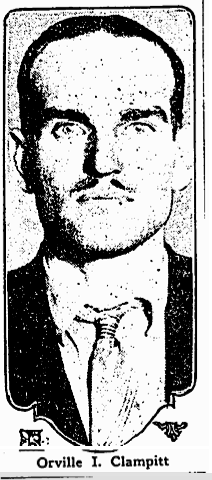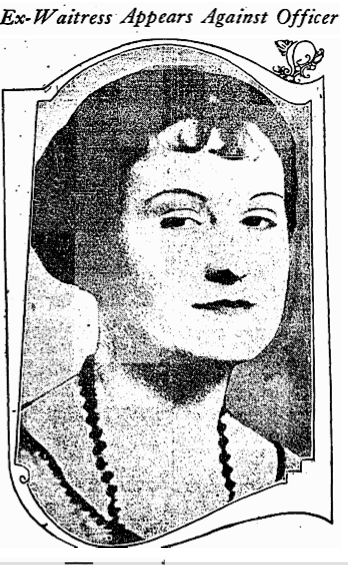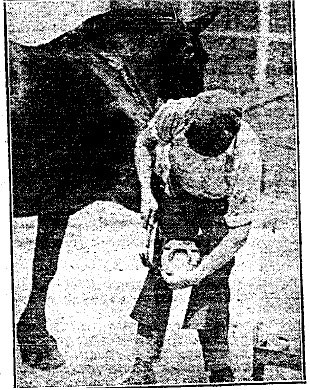October 25, 1927
Culver City
Orville Clampitt cannot, it seems, stay out of trouble. First there was that business last year with the euphoniously-named Miss Lucille Swallow out Kansas way, and the San Francisco court martial the then-Army Chaplain (and "Beau Brummel of the Presidio") endured over accusations of "objectionable conduct" in violation of three of the articles of war. These charges were brought by the lady after she discovered that Clampitt, who was otherwise a delightful companion, was married with a quartet of kids.
"I forget when I first met Capt. Clampitt," Miss Swallow told reporters after eluding Army minders, "But he was awfully nice. He used to take me out for walks and to picture shows and to dinners. The question as to whether he was married never came up."
During the court martial, Miss Swallow produced love notes from the accused, and there was testimony that he had deliberately disguised his handwriting. But then several surprise witnesses appeared to claim Miss Swallow was "out to get" Mr. Clampitt because he’d refused her demands for money, and he was found not guilty.
He promptly retired to Santa Cruz, where he registered as "William Jones" in a hotel where a "Mrs. Jones" was also staying. It was bad publicity over this indiscrete act that resulted in Clampitt being dismissed from Army service, and the offer of a $50,000 motion picture contract for himself and his photogenic horse Red Head.
But no, said Clampitt, he wished only to return to Vancouver, where his wife and children waited. That was April. And today, he was picked up by Culver City police, following the arrest of boy burglar Spencer Farley, discovered in the act of looting the Schwartzkoph manse at 1725 Gardena Street, Glendale.
Farley told officers that his home address was Orville Clampitt’s car, in front of Clampitt’s home at 215[?] Silver Ridge Avenue, and that he was stealing so he could give gifts to Clampitt’s 13-year-old daughter. It seems the whole family has relocated, in hopes of starting a new life. Clampitt stated he’d been hired as actor John Gilbert’s double, a claim denied by Gilbert’s studio.
When questioned, Clampitt admitted he was allowing Farley, 15, to live in his car, because the boy claimed his mother threw wild parties and refused to let him sleep at home. While he thought it weird that Farley wouldn’t tell him where he lived, he was sympathetic to the boy’s plight… at least until he discovered that the kid was taking his car out at night! Stolen golf clubs and various trinkets were seized from the Silver Ridge address.
Clampitt will be released tomorrow when it’s determined he knew nothing of Farley’s thefts. Henceforth he disappears from the public record save for an April 1929 theater review of his cameo in Edward Horton’s play "The Hottentot," at the Majestic Theater. Red Head the horse had a leading role as the comic foil to Sam Harrington, who masquerades as the famous jockey who shares his name, and eventually must ride the fearsome Hottentot in a race. After each show, crowds gathered on Broadway to watch Clampitt ride Red Head, now mild as a merry-go-round pony, away from the theater and, we hope, home to his wife and kids.
















